Challenge 2 – Sessions 1 to 4
Challenge 2: Design Sprint
Future Selves, Creating a New Product
Introduction:
With the experience of disabilities being an inevitable aspect of live, this challenge focuses on considering disability when developing innovative designs. The overarching goal of this assignment is to create a product that aims to assist those with a specific disabilities, but which can also be beneficial to a more general audience as well.
Sessions:
Session 1: Research and Empathy tools
Research
- For this session we were assigned to conduct research and form an informative presentation in preparation for the creation of an empathy tool for our assigned topic of dexterity. Considering disabilities regarding dexterity, which causes limited or painful movement, our team chose to specifically focus on the condition of Peripheral Neuropathy. Those with this condition experience nerve damage that leads to impaired coordination and dexterity, in addition to weakness and numbness. When forming our presentation, we took into account not just the sensory obstacles, but also some of the emotional challenges that may impact those with this disability too.
Deliverables
- Slideshow introducing the condition:



Session 2: Empathy tools
Ideation
- Based on the research we gathered in the last session, we began to brainstorm ways to build and empathy tool that would attempt to reflect the emotional feelings experienced by those with Peripheral Neuropathy. For this, we came up with two main ideas, one which addressed hand limitations, and the other that considered walking difficulties.

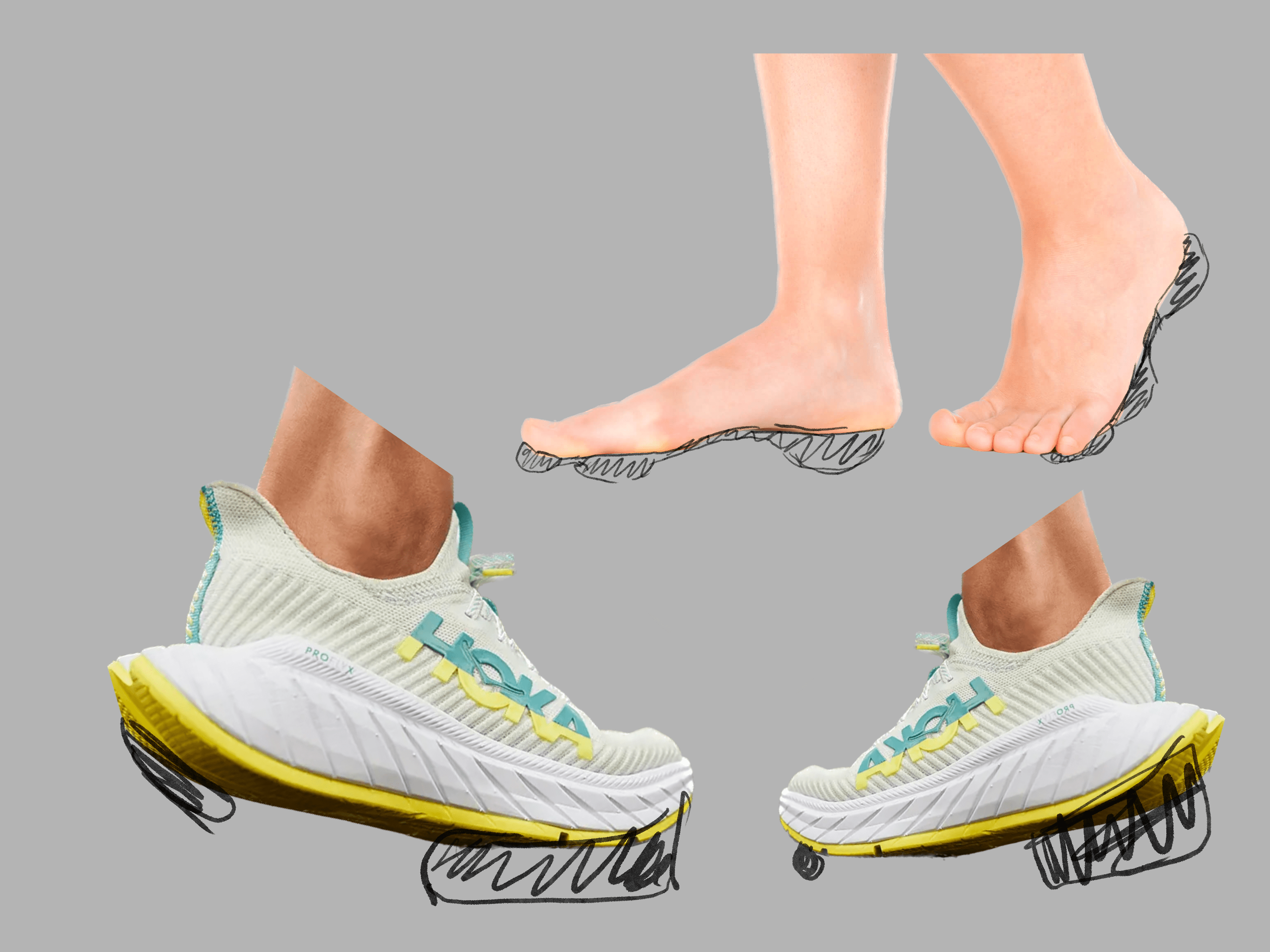
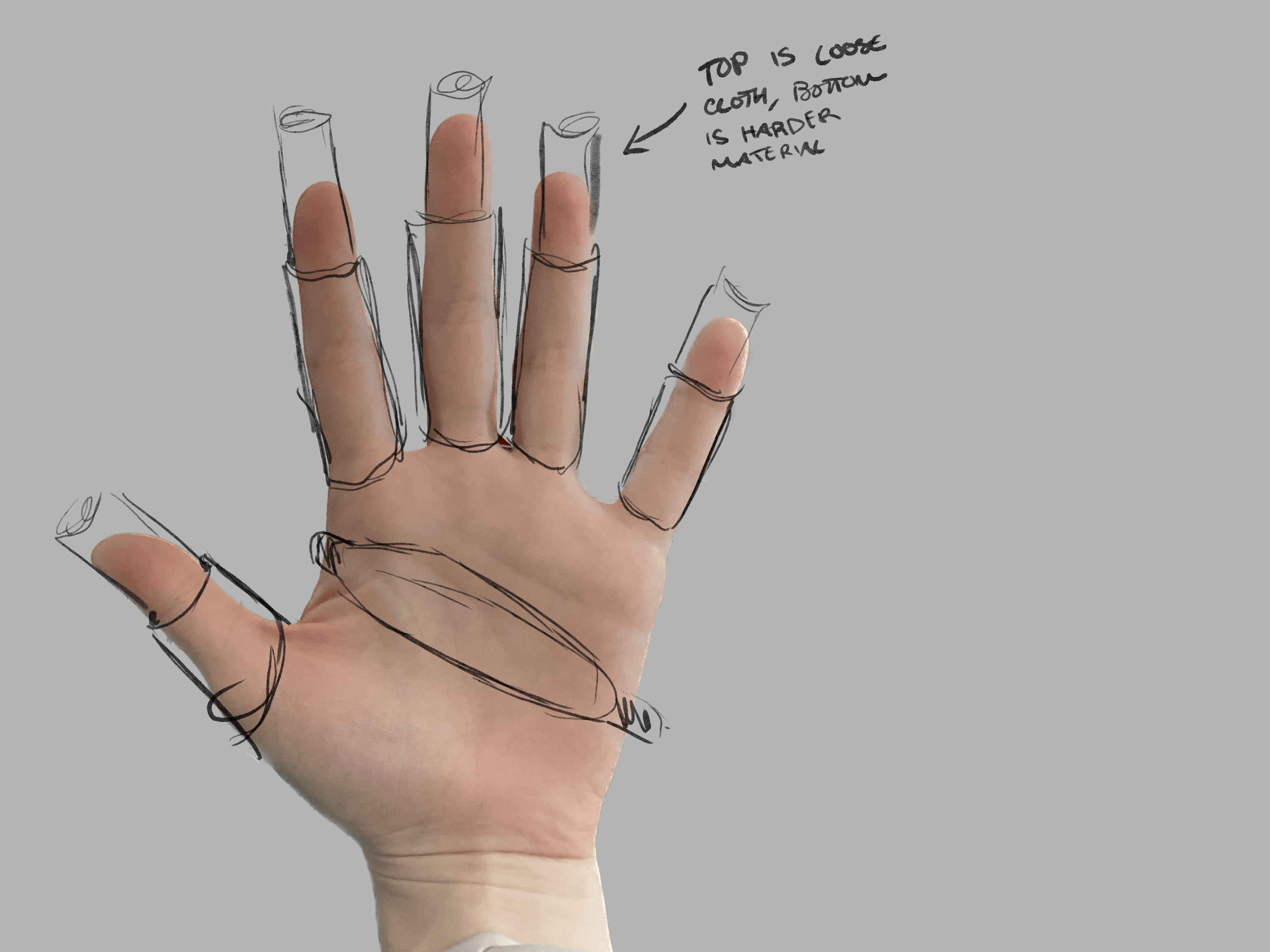
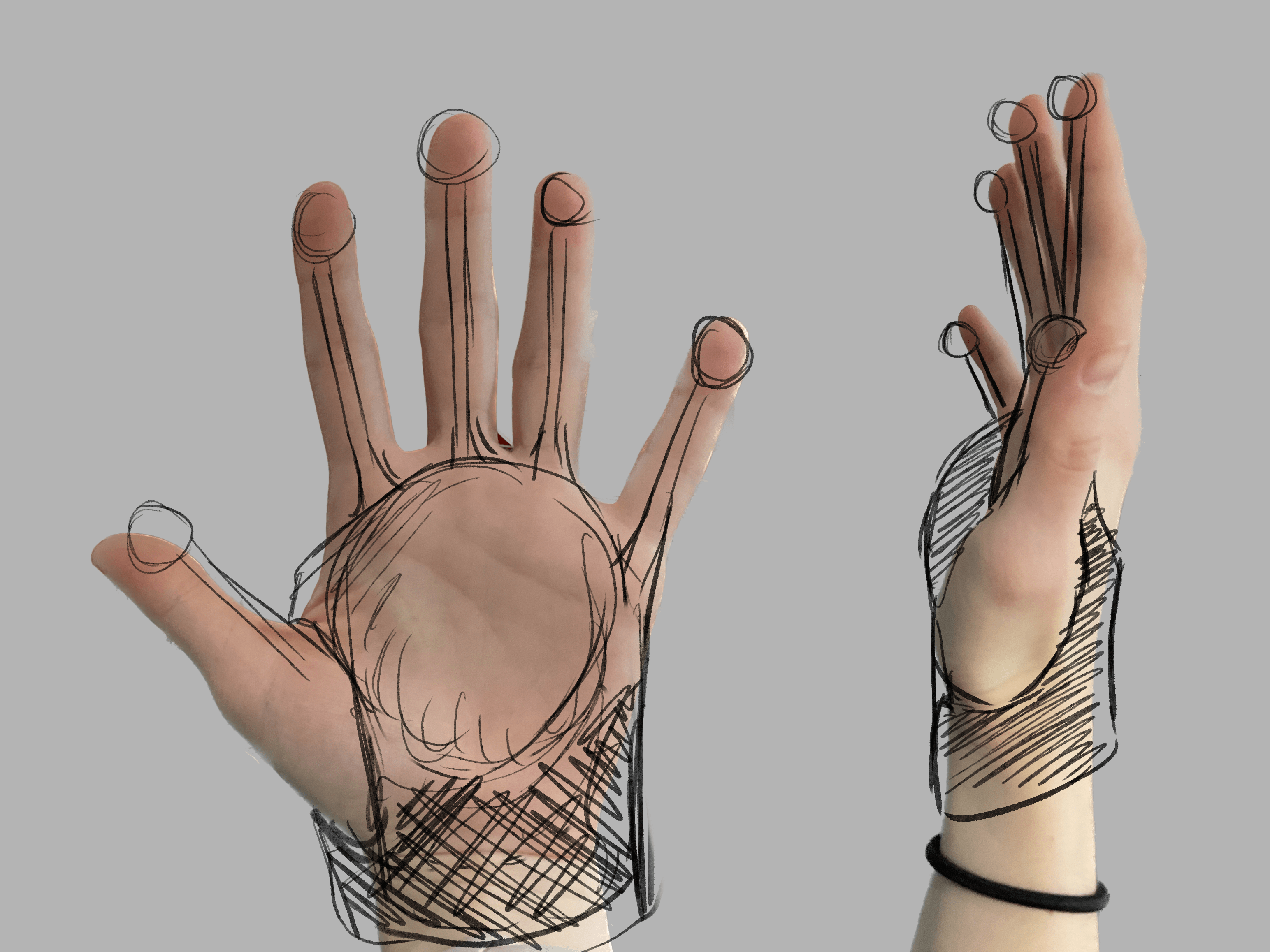
Tool Build
- Following brainstorming, we chose our favorite design and proceeded to build a an empathy tool product. Although both considered limb sensory impairment, in the end we decided to proceed with our idea regarding feet dexterity limitations. This idea highlighted the difficulties and discomfort that one would feel when doing daily tasks like walking or standing. To do this, we created a pair of shoes inspired by the Japanese style footwear known as Geta. Because these shoes require the user to balance on its elevated bases, we thought they would serve as a useful starting point for recreating balance issues. With that in mind, we combined reinforced cardboard bottoms with stuffed cloth bags attached underneath, which would shift whenever the user placed pressure on certain areas while walking. There were also angled ramps on the sides of the soles causing further imbalance and discomfort. Finally, elastic bands were attached to the tops to secure the user’s foot to the tool, while only providing little sense of control.

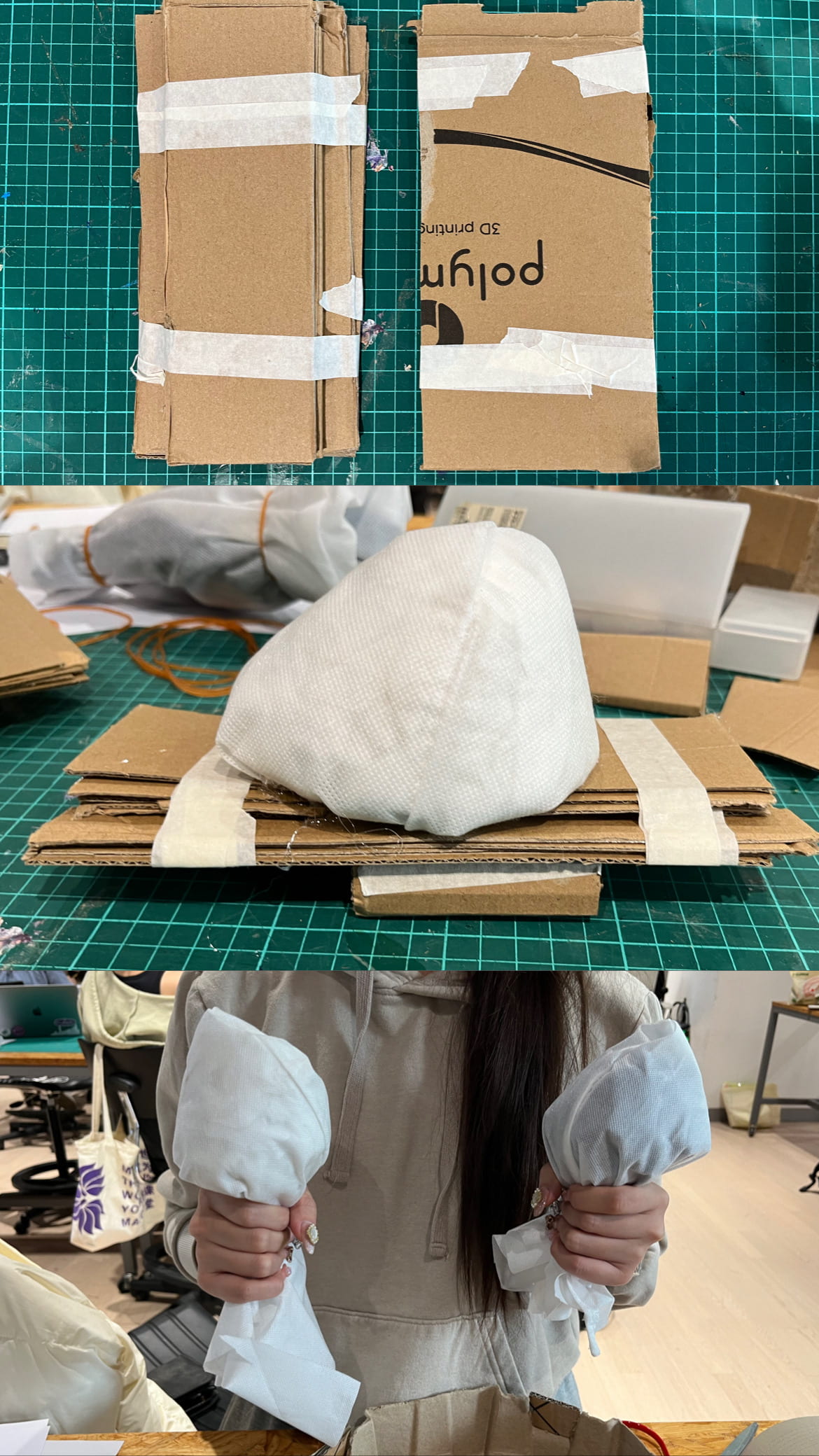
Testing and Results
- After the assembly of the tool was complete, we moved into user testing and reflections. While testing we asked users to describe the feelings that the empathy tool evoked, mentioning how difficult simple tasks were and reflecting on how their life would be different if they had to experience these obstacles constantly. Overall, I’m very satisfied with the outcome of our process, and I feel that our empathy tool successfully met the goal of this task.





Session 3: Concept Creation
Concept
- For this section, we presented our previously created empathy tools to another team and traded products to test out and consider when going forwards into our new task. However, moving on from empathy devices, after the swap we had to begin developing a new tool that would address the problems and worries which the other team’s tool aimed to emulate and that we experienced during testing.
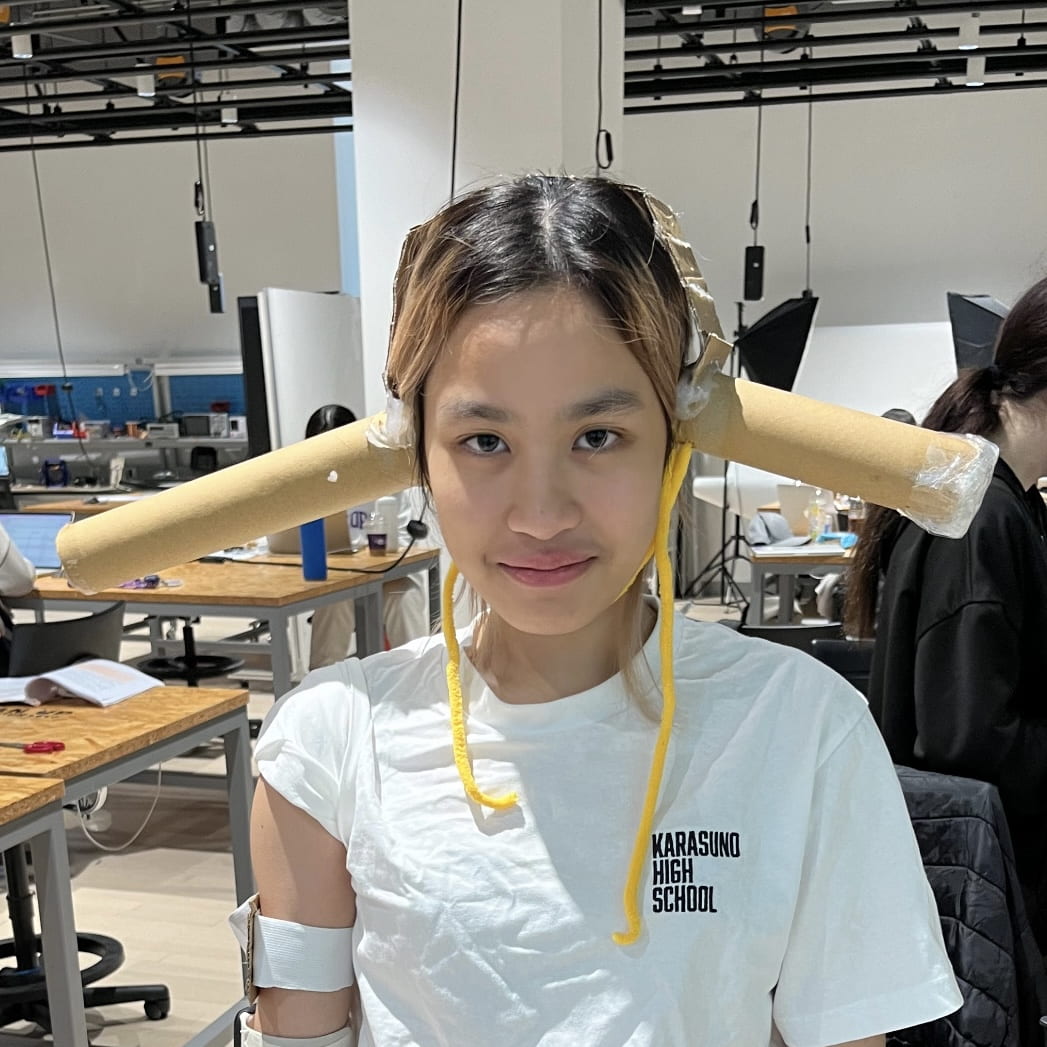
Ideation
- The other group’s tool focused around hearing impairment, specifically partial hearing loss. What we understood from the empathy tool was that a potential challenge associated with the condition could be a difficulty with alarms and notifications. So, using our experiences and information gathered from using this tool, we sketched two main ideas for a product that would offer a solution.
- Thoughts while wearing the device:

- Potential solution tools:
-
- Vibrating device
- Vibrating watch for people that have trouble hearing their alarms
- Because people with hearing aids have to remove them to sleep, they might face issues when having to set alarms to wake up in the morning
- Light timer
- Flashing light timer instead of a noise timer
- When the timer goes off it blinks a light to gain the user’s attention
- Vibrating device
-
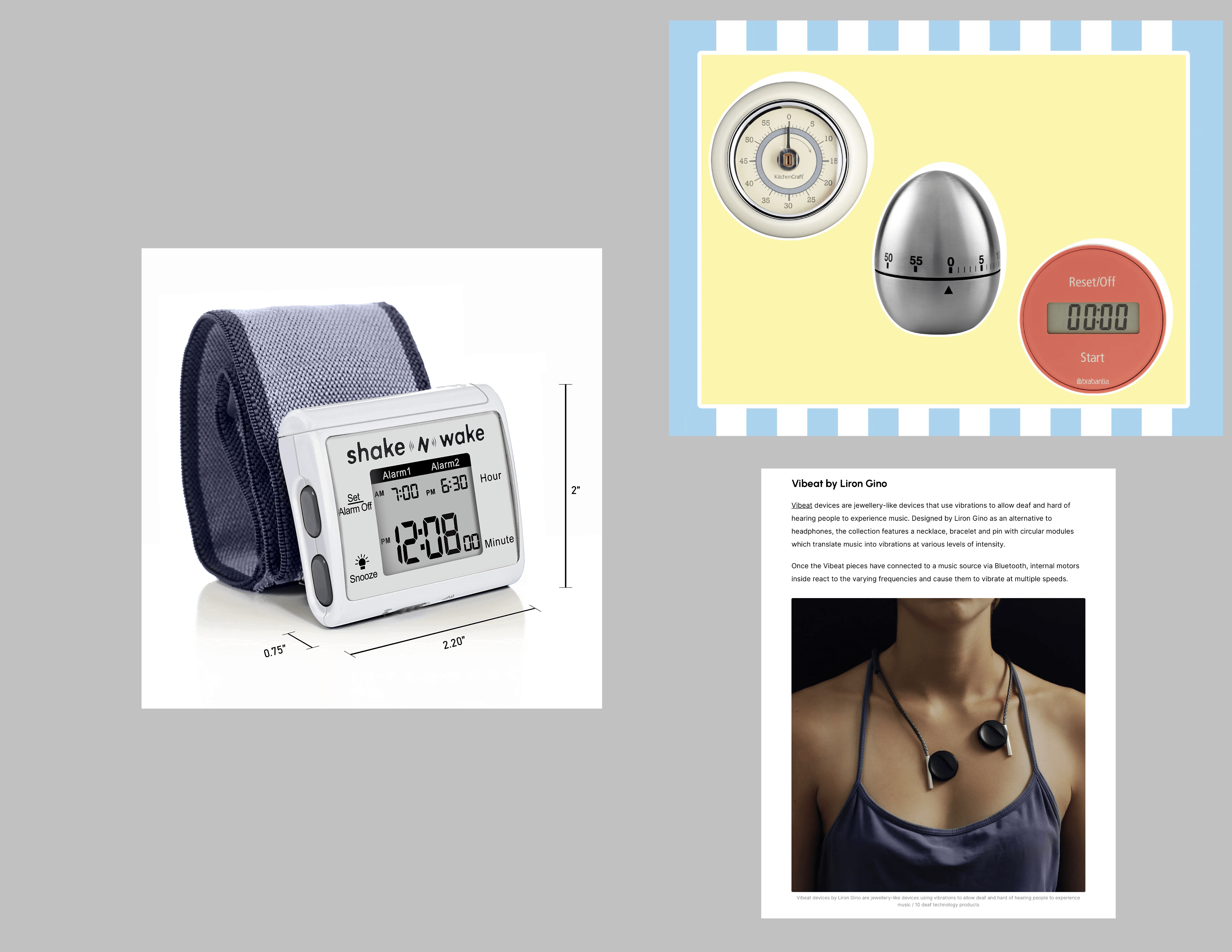



Initial Prototype Build
- There were 2 sets of prototypes for the separate devices. Our team worked together to develop the ideas and begin the prototype building on both devices.
-
-
- Vibrating device
- Adjustable straps
- Different forms of wearable technology: ring, necklace, watch, and pin
- Can all connect to each other via bluetooth
- Seamless and discreet
- Light timer
- Intuitive design
- 360 degree lights so the user can see them at any angle
- Hook to hang tool anywhere
- Portable and compact
- Vibrating device
-
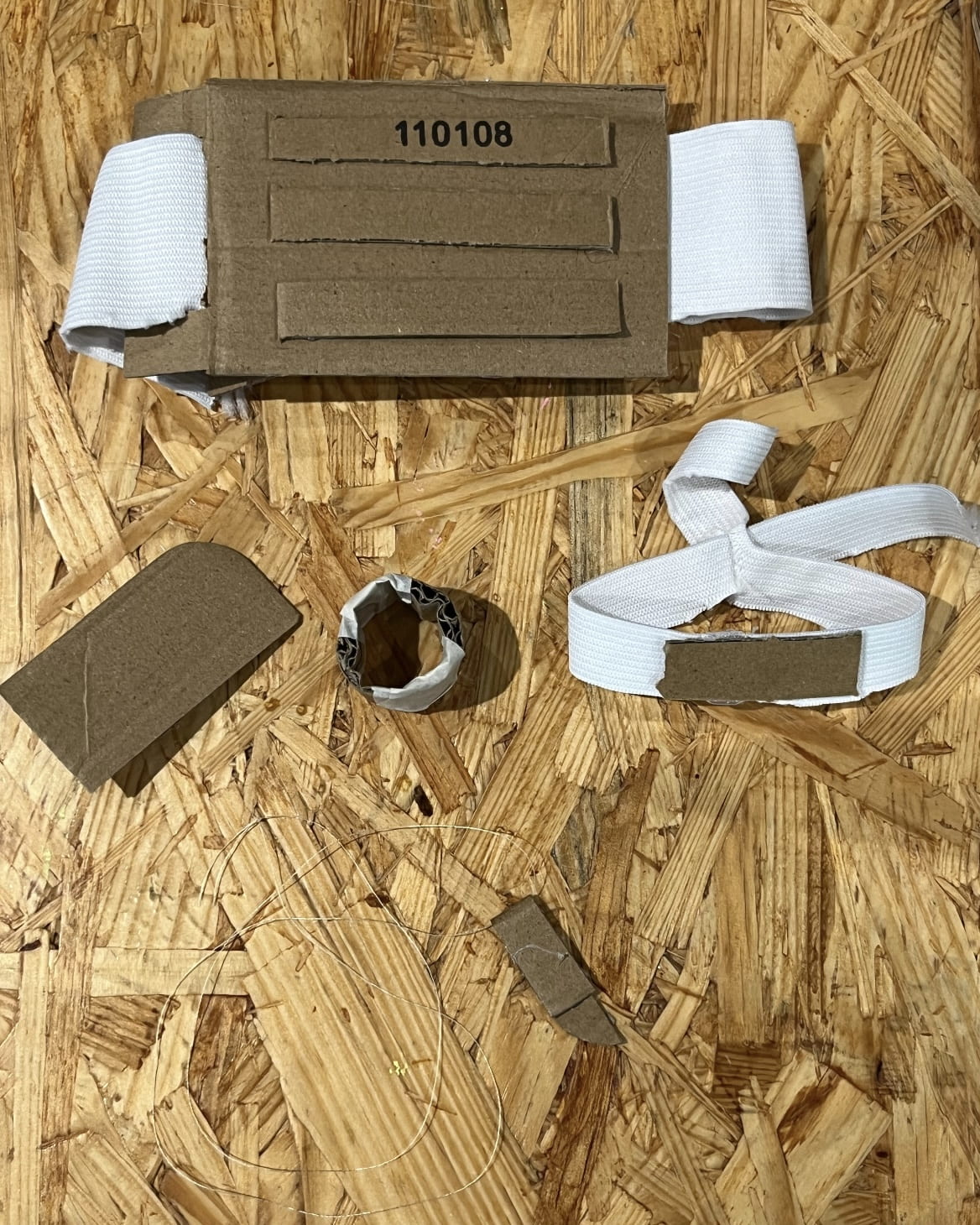
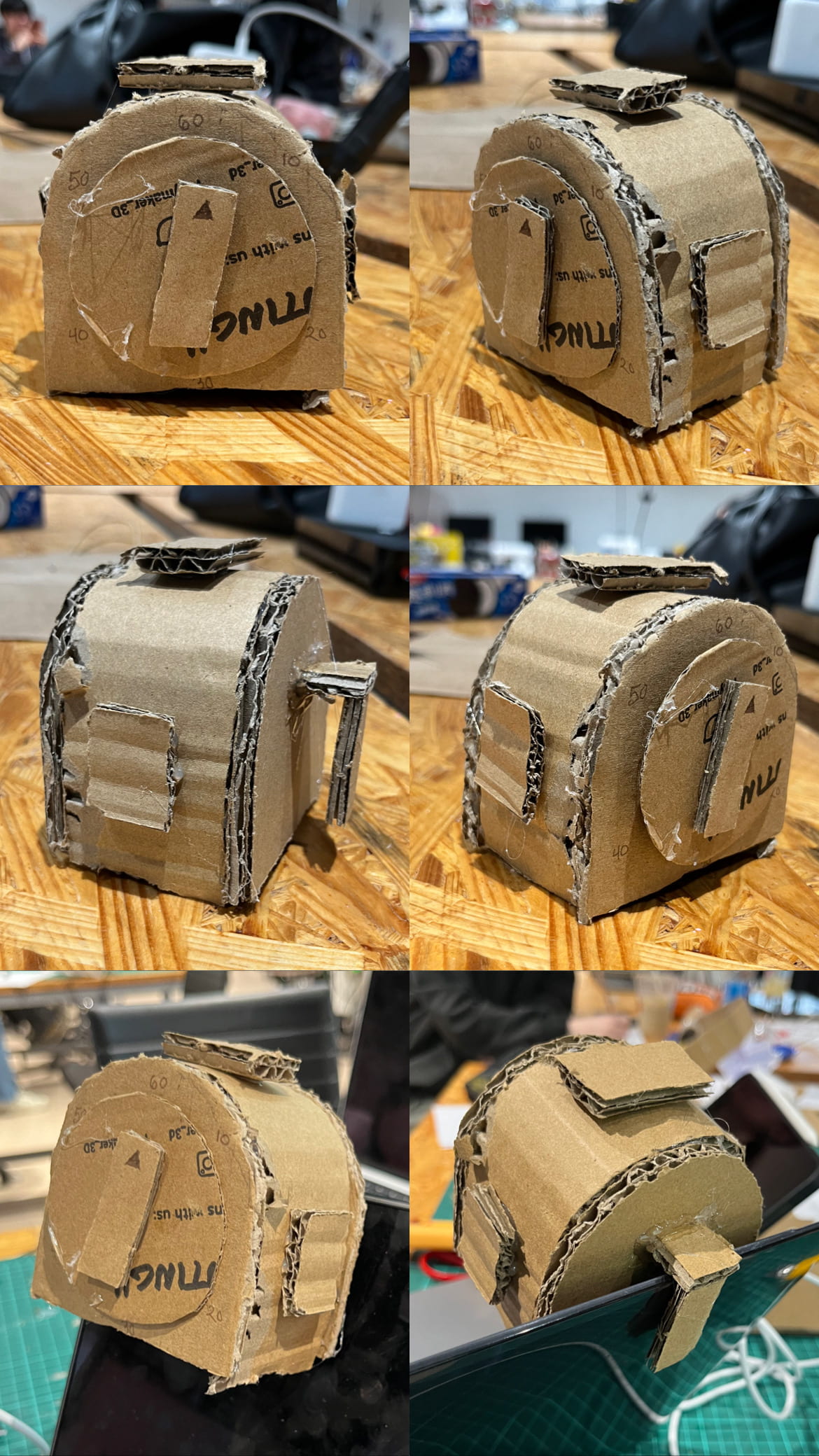
Testing and Results
- Testing:
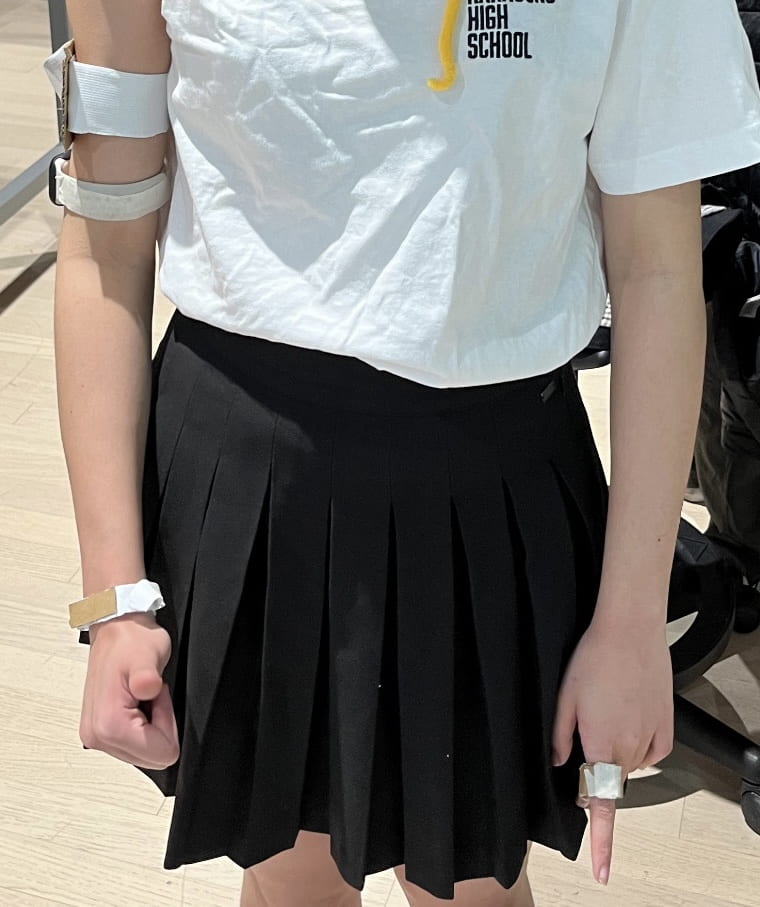
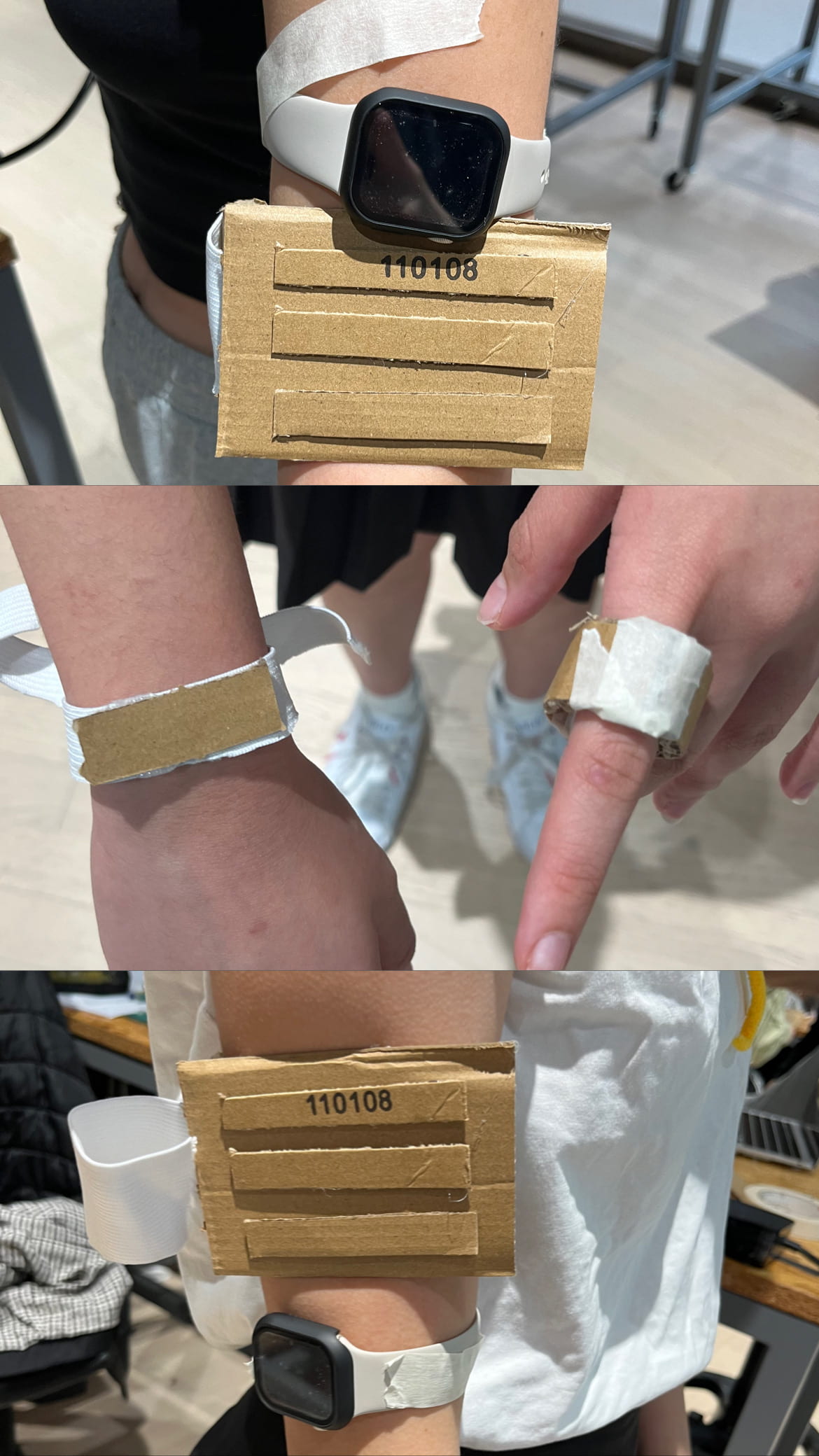
- User feedback:
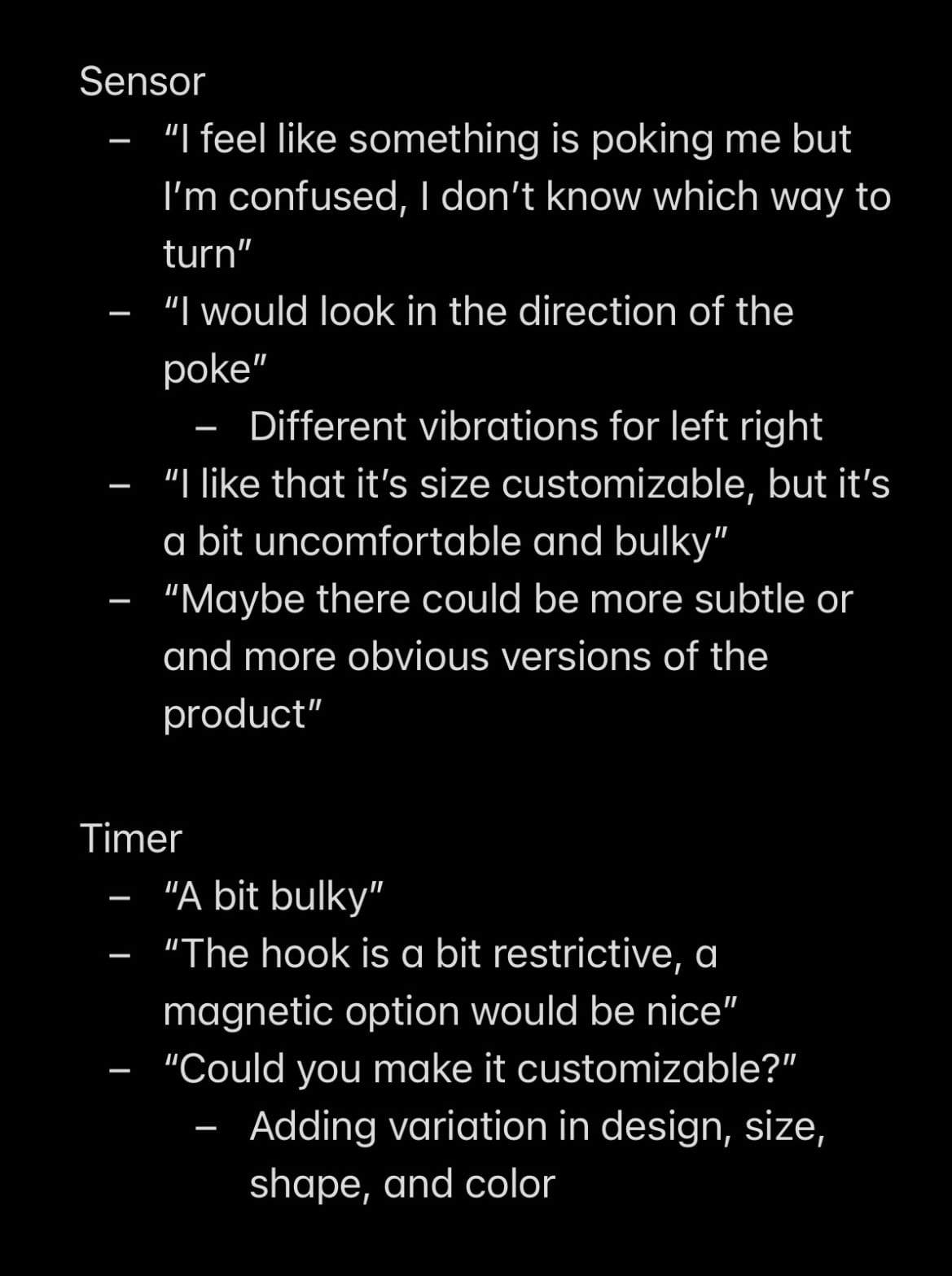
-
-
- Based on the feedback and critiques from users during the user testing, many potential improvements could be made in the next session. For the vibrating device, we will aim to reduce the size, add more features, and increase the comfort and fit. As for the light alarm, we plan to change similar components like size, while incorporating customizability and utility.
-
Session 4: Concept Refinement
Prototype Refinement
- Beginning the refinement process, we took all the critiques from the user testing and started to apply those ideas to our work in this session. Despite at first only refining two prototypes, we ended up adding another third prototype when an additional team member joined our group during this task. Splitting up the workload, personally, I focused on refining our vibration device, meanwhile my partners worked on developing the light tool further and creating a new solution product. Because one of the main critiques during user testing was to make the product more discreet and comfortable, therefore I looked for ways to improve the arm band element as well as the device dimensions. To do this, I built a velcro attachment component that made the fit of the watch and sensor bands stronger, sleeker, and smarter. Although I faced some problems when building this element, creating several models that failed, in the end I was able to form a version that finally worked as intended. Other than that, I also made improvements to the sensor and watch’s dimensions and visuals, as well as abandoned some of the other wearable technology tools that I originally brainstormed.
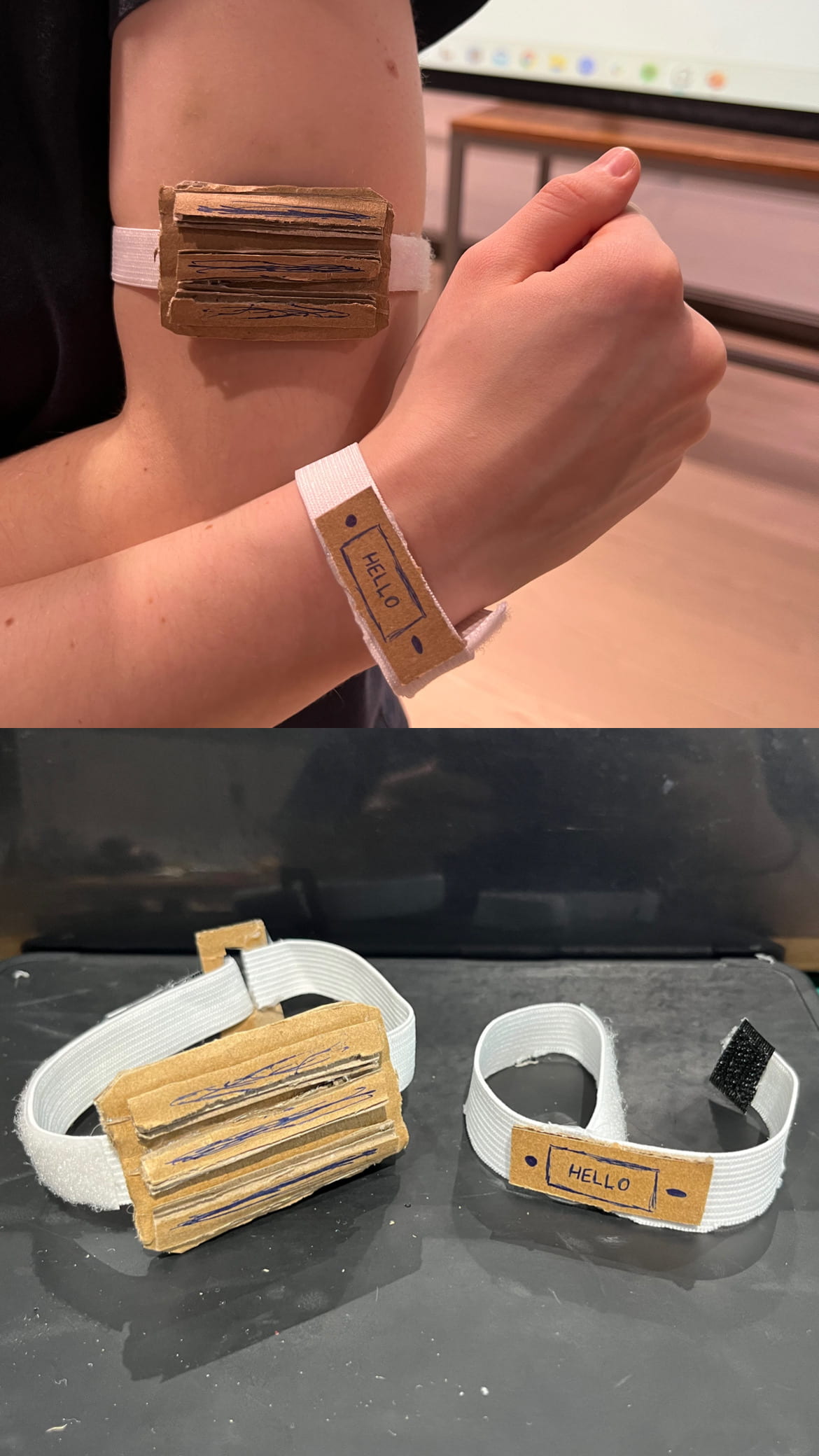
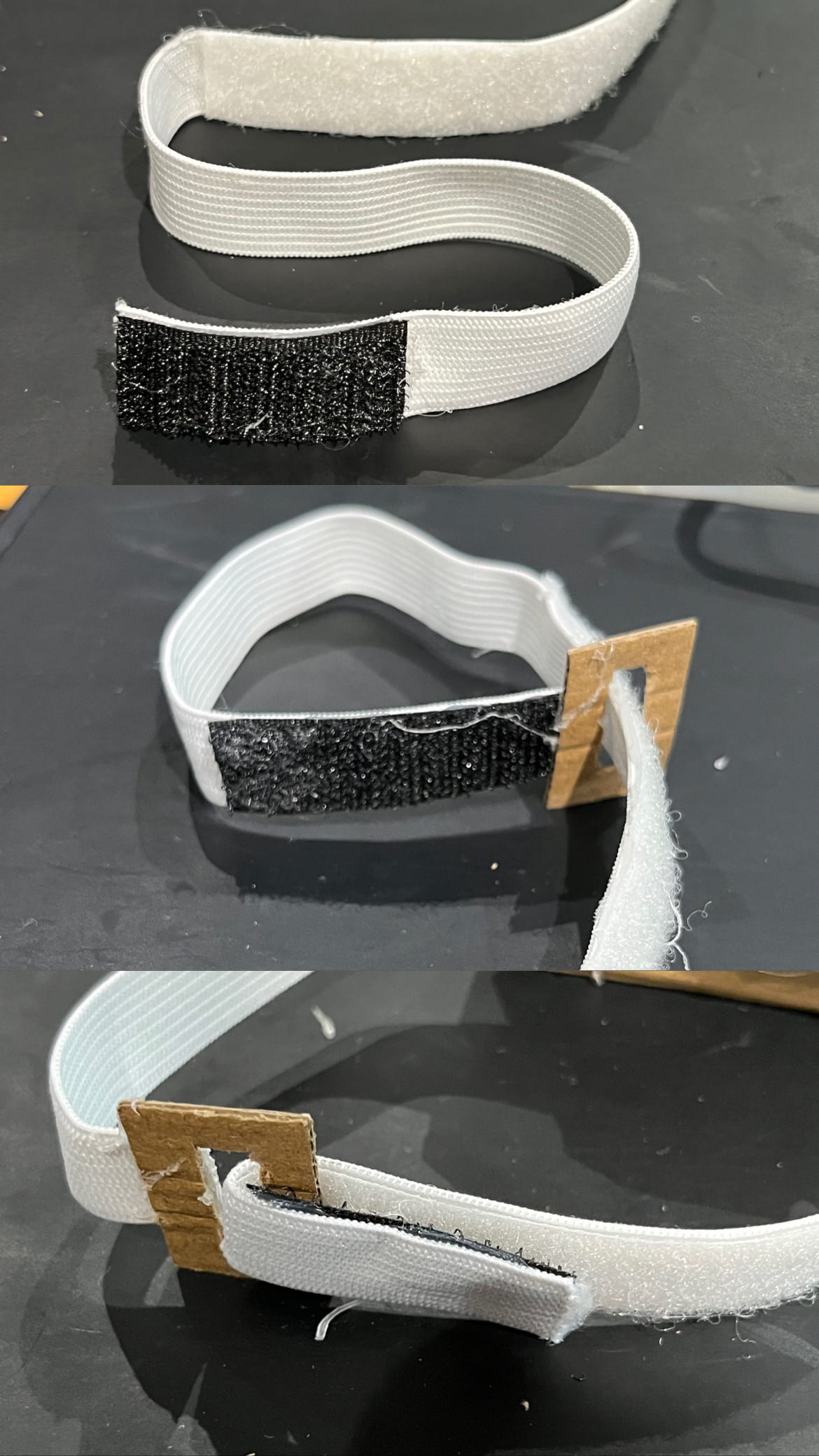
Presentation Preparation
- Our presentation on assistive tools for partial hearing loss explains our concepts and ideas, describes our research, highlights our insights, introduces our three different prototypes, and breaks down each tool’s features and benefits.
- Final presentation:












Project Swap!!!!!!
- For our last project swap, we once again switched devices with another group. Their product addressed challenges associated with Hand and Arm Paralysis, and they had three versions of different tools that would target these related complications causing limited sense of touch for some with this disability.
- Other team’s projects:
-
-
- Multifunctional Mouse
- Handy Writer
- FootBoard
-
- Reflecting, I felt that swapping our projects after each block was very informative and eyeopening, as it allowed us to consider different types of disabilities when empathizing, brainstorming to solve, and developing products.
